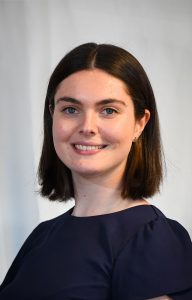By Jennifer Sloane

Photo by, Peter Rae Copyright UNSW. Photo shows, Nicole Green.
After 5 years of being a student at UNSW, Nicole still doesn’t get sick of walking through the beautiful campus and taking in all of the greenery and open space (at least when she’s not hard at work in the lab). In the lab, Nicole looks at how a cell can turn on and off genes to try to understand the genetic component of Autism. Now we’ve all probably heard of genes before, but what do genes actually do? Genes determine whether you have green eyes or blue eyes or what color your hair is. But, genes do even more! They also control whether or not you have a certain disease. Sometimes a disease can be caused by having too much or too little of one gene. I like to imagine it like as a knob in your car to turn the volume up or down. If the knob is turned too far down, you won’t hear anything, but if it’s turned up too high, you won’t enjoy the music because it’s too loud and painful to listen to. Therefore, you want to turn the volume to just the right amount. So, what does this mean in Nicole’s research? She looks at brain cells to try to understand how cells turn on and off genes. She is specifically interested in looking at genes that are linked with Autism to try to learn more about the disorder. How cool is that?! Every day Nicole gets to work with real human brain cells to try to understand the behavior of genes.

After learning some of the basics of her research, I asked Nicole what is her favorite part about her research? She told me that she “really enjoys the problem-solving part of it”. But, perhaps even more interesting, Nicole went on to tell me that “the weirdest part of my research is that we buy human (brain) cells from companies”. Now I’ve always known there are many scientists who study human cells, but I’ve never thought about how they go about getting the cells in the first place? Well, it turns out, just like anything else in life, you can buy them online!
Outside of the lab, you will likely find Nicole either cooking up something delicious or playing with her cat, Gus. Cooking is one of her favorite hobbies, which may not come as a big surprise considering there is a science behind cooking. You (usually) have to follow a certain method, or instructions, and need to make sure you have exactly the right ingredients. However, of course the best part of cooking is eating the food, which you can’t exactly do in the lab. Nicole has also recently started going to an art class on drawing and painting with watercolors. She is very excited to be trying something new and challenging herself in something outside of science. We are very lucky to have Nicole as one of our members of the UNSW Women in Maths and Science Champion Program and look forward to seeing her success inside and outside of the lab!
Follow Nicole on Twitter
Follow Jennifer on Twitter